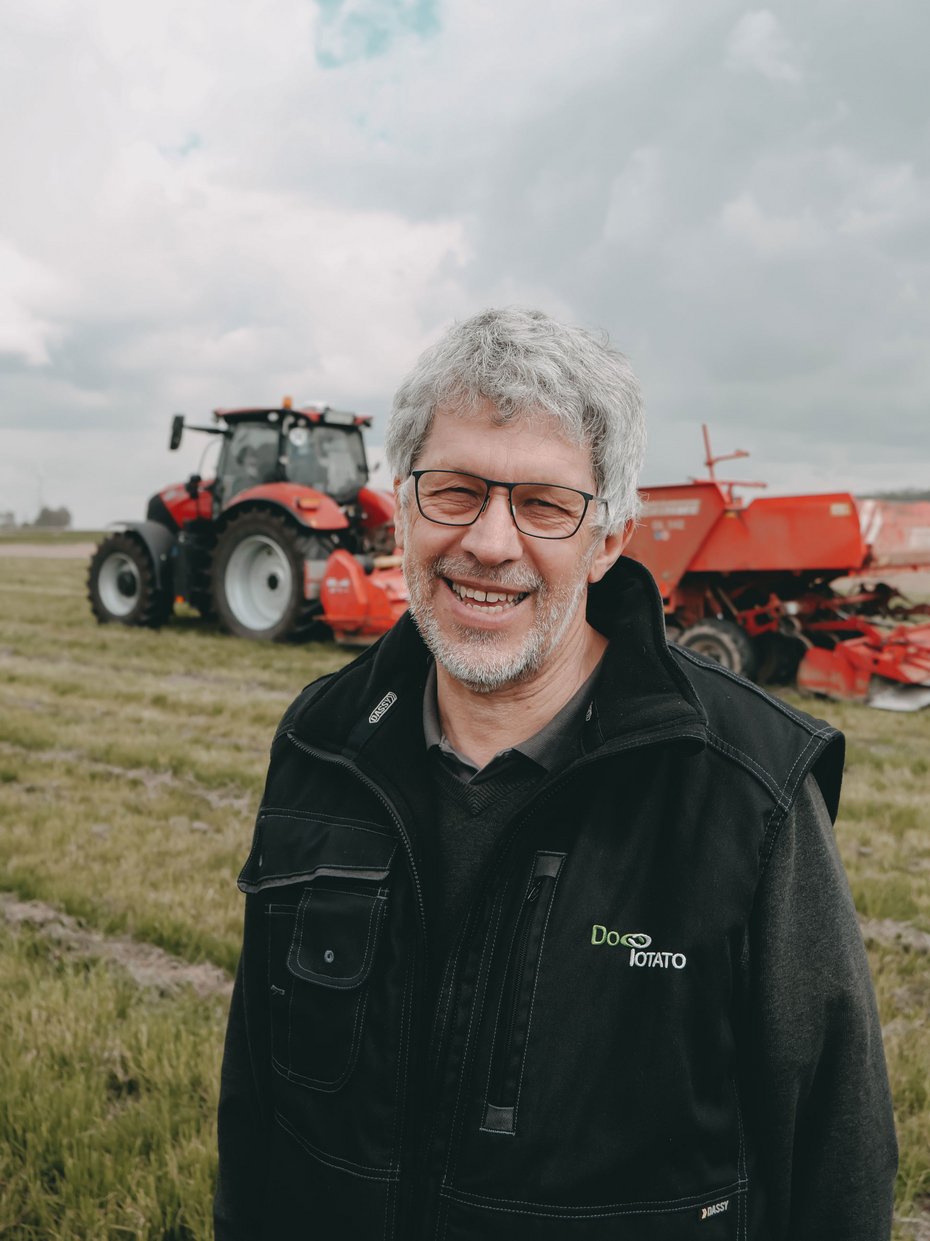Challenges of the Potato Harvest
In the case of the potato, the crop grows completely underground and the tubers are also very sensitive to mechanical stress due to their high water content. This forces harvesting to make compromises specific to the crop in order to reconcile quality and area performance while taking into account the farm's objectives.

Despite the cultivation of potatoes in ridges, on average usually more than 1,000 m³ of soil per hectare must be taken up in order to be able to harvest the approximately 75 m³ of tubers. This very large quantity of soil requires a corresponding screening area in the harvesters, which, however, is first limited both by the maximum width of the harvesters during road transport and by the machine costs. In addition, the sieving capacity of the soil varies greatly depending on the moisture, which makes a smaller sieving area seem sensible under dry conditions and an even larger one under moist conditions.
In practical harvesting operations, this requires a high degree of adaptability on the part of man and technology in order to ensure the build-up of a closed and therefore tuber-protecting soil cushion as far as possible to the end of the sieving channel. In addition to adjusting the travel speed and speed of the screen chains, adjustable screen aids or changing the screen chains can also contribute to achieving this goal. If the further transport route of the harvested crop, e.g. by using a rear reception at storage or a transfer wagon, includes another possibility for soil and clod separation, the sieving intensity of the harvester can be lower than if it is directly transferred into large boxes at the edge of the field.
Using a weed whacker as part of the weed reduction process significantly reduces the amount of weed in the collected cuttings, but very short cut residual stems are much more difficult to separate mechanically and usually result in increased harvesting effort. The importance of separating tuberous admixtures by the harvester has declined on many farms due to the greater prevalence of soil separation in spring and the concentration of cultivation on the more suitable areas. In addition, stationary roller separators are installed in the emplacement line in order to separate loose soil and, above all, small stones and clods. In starch potato cultivation, the focus continues to be on admixture separation at harvest for cost reasons.




However, the first farms are starting to use the pneumatic admixture separator, which was actually designed for use with harvesters, as a stationary unit at the edge of the field before the potatoes are transferred to the transport vehicles or temporarily stored in a field windrow. Due to the joint assembly of receiving, cleaning and separating technology on a low-loader, this post-cleaning unit has a high degree of mobility and, in accordance with its performance, is also suitable for inter-company use. However, the applicability of this process solution to other processing directions is limited for quality reasons, as experience has shown that the later the hard clods and stones are removed from the material flow, the greater the risk of damage.
The "optimal" size of the harvester bunker is a recurring topic of discussion. While many practitioners would like to see even larger capacities, especially for the two-row trailed harvesters, manufacturers are increasingly bound by basic legal conditions, e.g. for axle load or transport width and height, in order to obtain the important type approval for their machines, which is recognised throughout the EU. Against this background, overloading bunkers that can be emptied without loss during the journey are growing in importance. On the one hand, this eliminates the shunting time required for loading onto the wagons, but on the other hand, with the limited bunker volume, a continuous removal chain must be ensured and the transport journeys in the field with vehicles that do not always have tyres that are gentle on the soil increase significantly. The first special transfer wagons, some with mechanical or pneumatic separating devices, are available on the market, but for reasons of cost and quality they have so far only been able to prevail over the classic removal methods on a few farms.
The gentle, but at the same time performance-oriented harvesting of the potato tubers from the soil is supported by a wide range of adjustment options on the harvester. On the one hand, the manufacturers take this into account through the intensive integration of actuators as well as hydraulic drives up to fully hydraulic trailed and self-propelled versions. On the other hand, more and more assemblies can be equipped with automatic control systems that independently adapt the circulation speeds to the respective operating conditions within the specified limits. This significantly reduces the workload of the tractor driver, who, however, may also have to take on other tasks, e.g. due to overloading during the journey. External monitoring and control options via WLAN or Internet connections offer further quality assurance possibilities in this context, as the driver can be supported more easily in difficult operating conditions or current rating results can be implemented directly in a modified machine setting.
